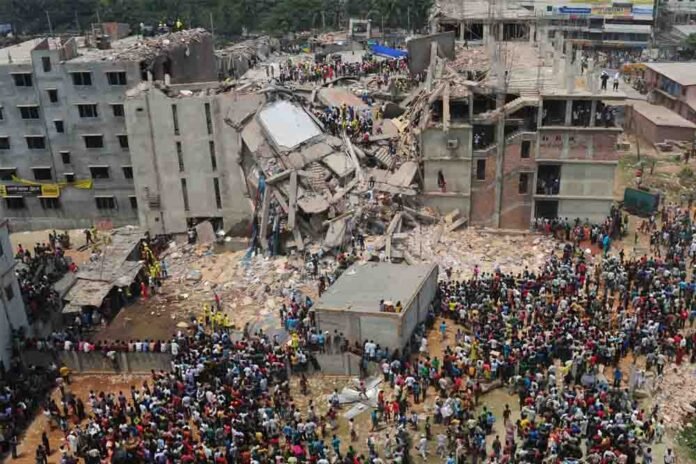A little more than 10 years after the horrifying incident in which 1,134 workers lost their lives after Rana Plaza, a nine-story housing garment factory crashed, a good number of garment factories have now become safety compliant.
The nine-story Rana Plaza collapsed on April 24, 2013, making it the deadliest industrial disaster in Bangladesh. The building housed several garment factories, which cared little for their workers in terms of safety or otherwise.
“More than 80 percent of Bangladesh’s 3,200 clothing factories are now internationally compliant with safety and security standards,” said data released by the Bangladesh Garments Manufacturer and Exporters Association (BGMEA).
Another BGMEA data revealed that the South Asian nation is home to half of the world’s top 100 Leadership in Energy and Environmental Designs (LEED)-certified green industrial units and that a Bangladesh garment company topped the 2023 LEED list.
A McKinsey Consultancy report released in 2021 called Bangladesh’s apparel sector a frontrunner in transparency regarding factory safety and value-chain responsibility.
Another report by QIMA, a global supply chain compliance solutions provider, ranked the country second in the ethical manufacturing index the same year.
The country has also amended its labour law twice, first in 2013 and the second in 2018 to safeguard worker rights and ensure safety at the workplace.
After the Rana Plaza incident, leading global garment brands and retailers signed up for two international efforts to improve factory standards.
The Accord on Fire and Building Safety in Bangladesh and the Alliance for Bangladesh Workers’ Safety are two bodies that helped the country’s factories improve and standardize their fire, structural, and electrical safety measures.
The Alliance left the country in 2018, claiming a 93 percent remediation rate across 700 factories it inspected, while the Accord, which lasted until 2020, helped standardize fire and building safety in more than 2,000 clothing factories.



